Boston Dynamics’ nightmarish BigDog is finally behind us, but that doesn’t mean we’re past seeing visually headless robot dogs every now and then. Spot has become the blueprint for these smaller and more agile quadruped machines and, to be fair, it has led to quite a few interesting designs and useful applications. Despite that, there are still a few design issues that need to be addressed, particularly when it comes to the robot’s mobility on any terrain or elevation, especially stairs and fences. That’s the kind of puzzle that this new quadruped robot is solving, ironically with wheels instead of flat feet, and it’s starting to behave almost like a stereotypical dog when it comes to climbing over things it probably shouldn’t.
Designer: Unitree
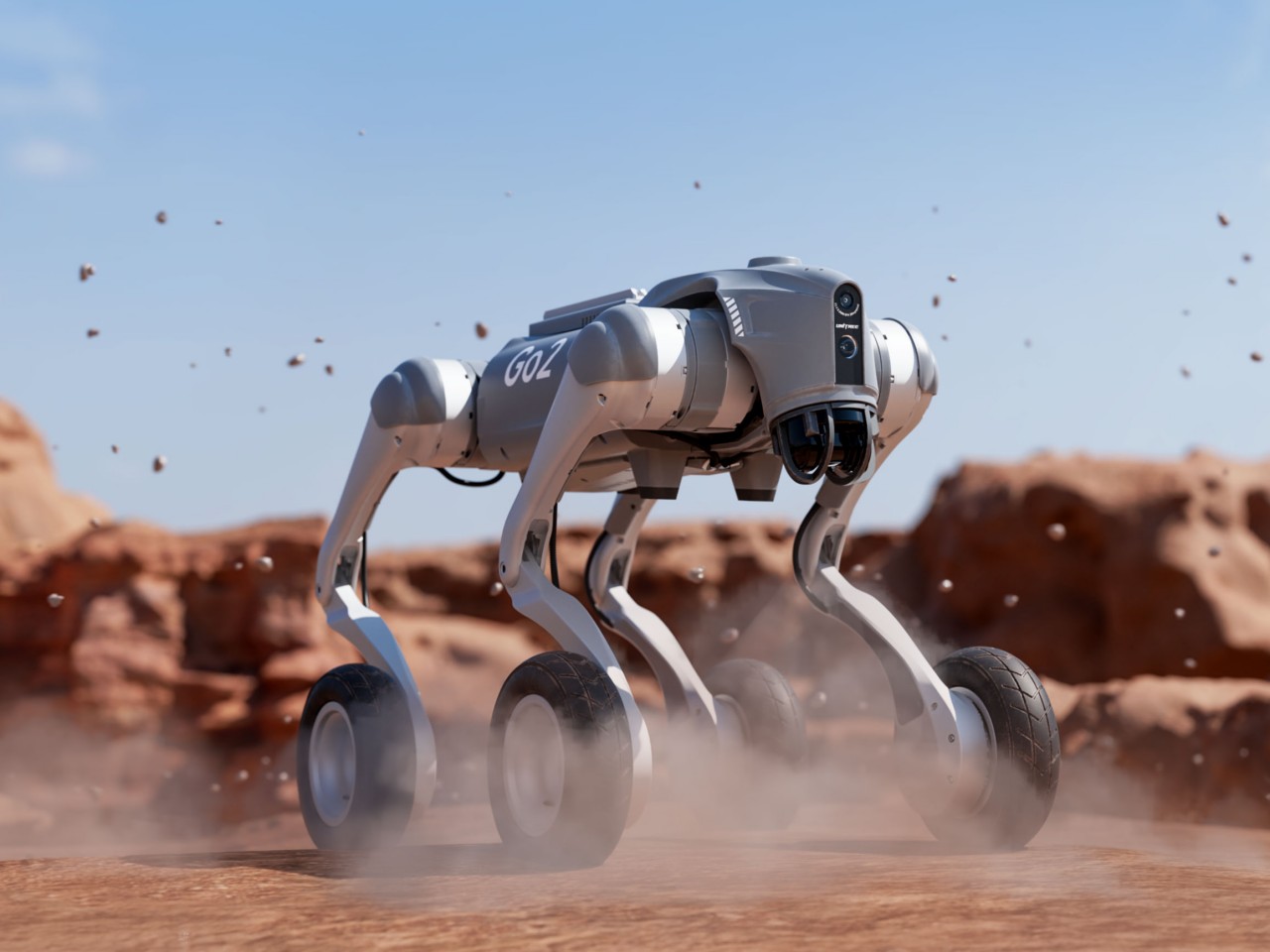
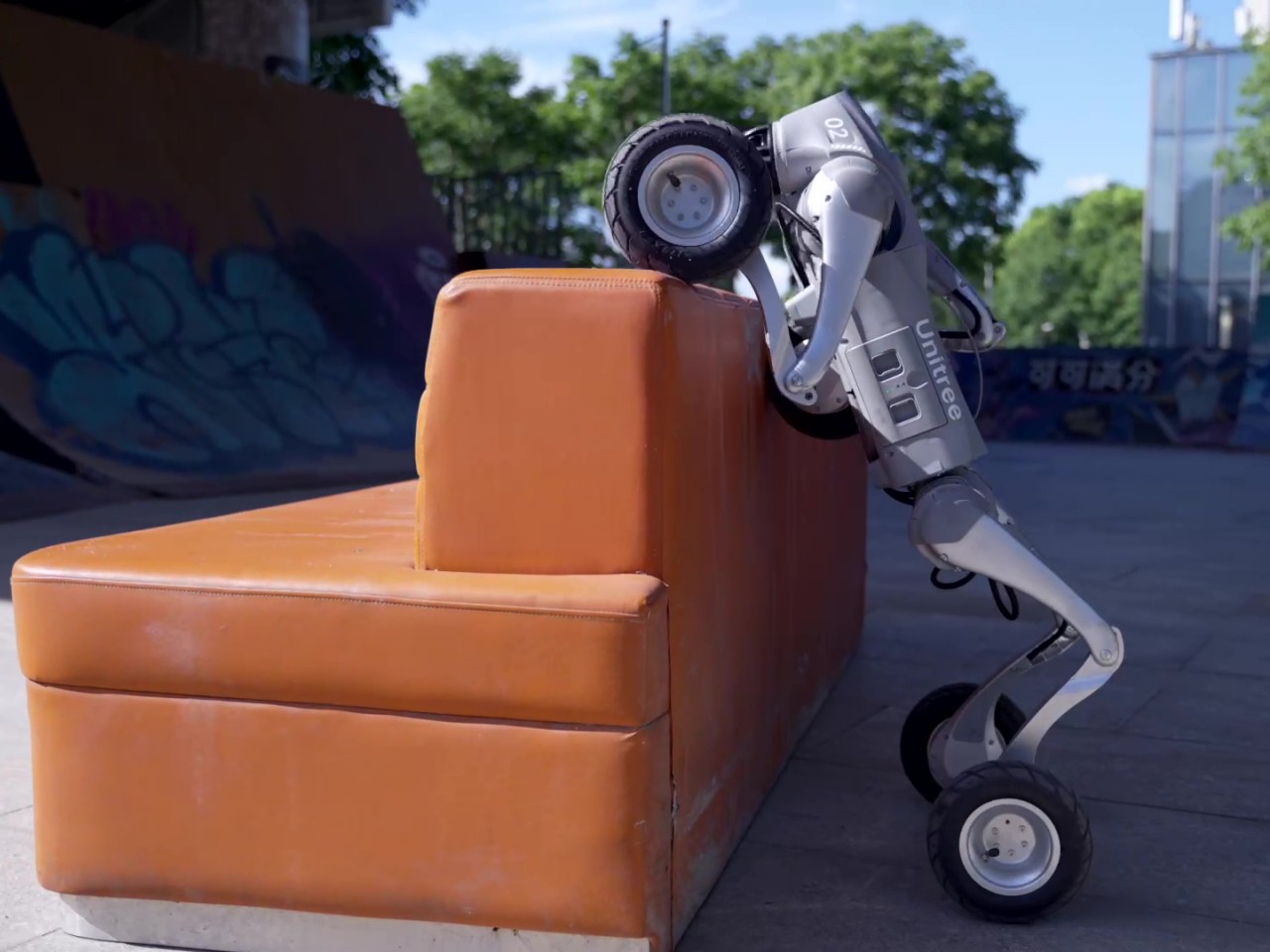
It sounds almost counter-intuitive to put wheels on a robot’s feet to help it move better, but that’s exactly what will make the Unitree Go2-W a head-turner. Technically, those wheels allow it to move anywhere, practically like an all-terrain four-wheel drive, rolling over smooth floors, rough roads, or inclined surfaces like ramps with precision and agility. But if you think those wheels will give it trouble on stairs, you definitely haven’t been paying attention.
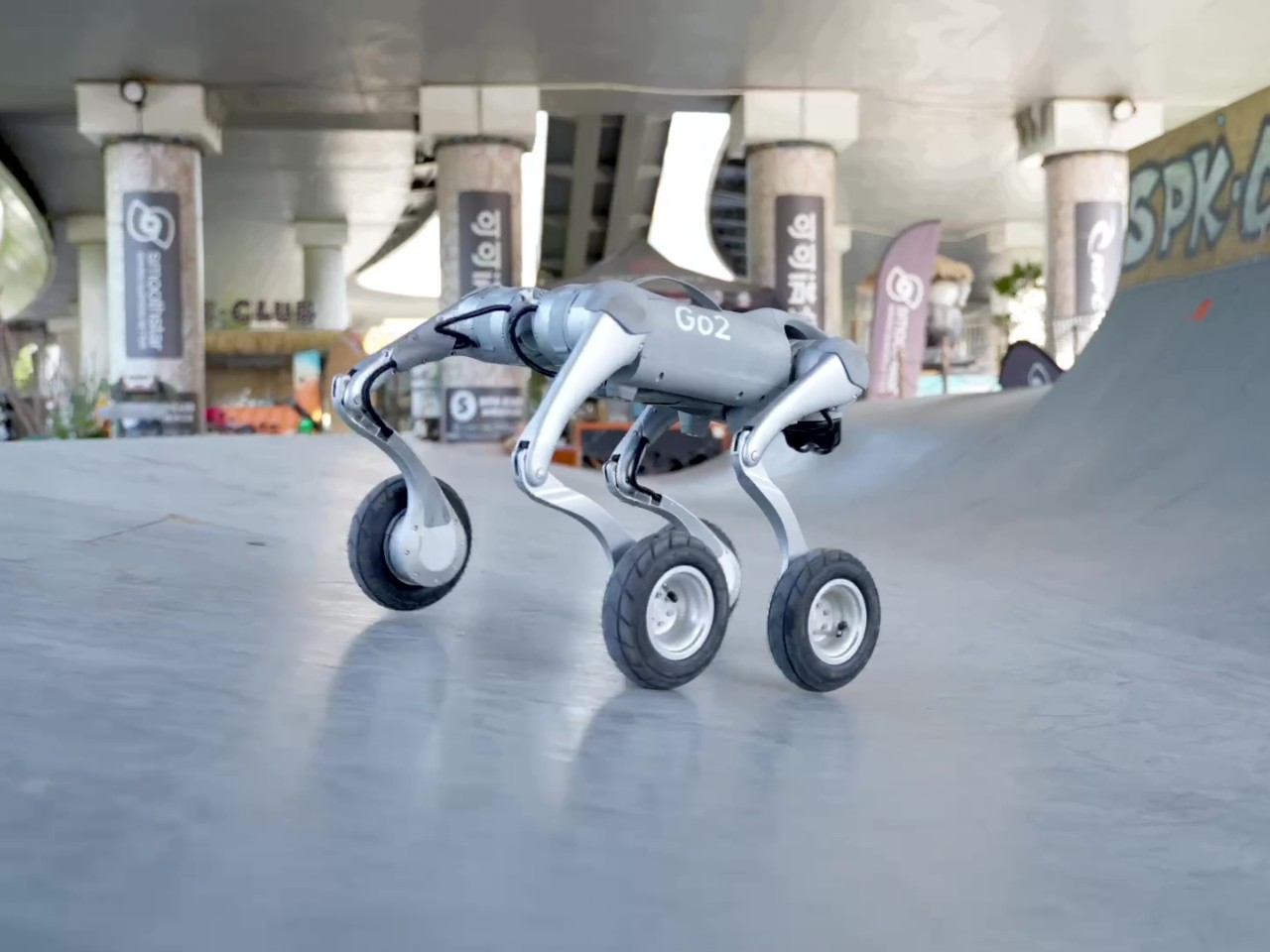
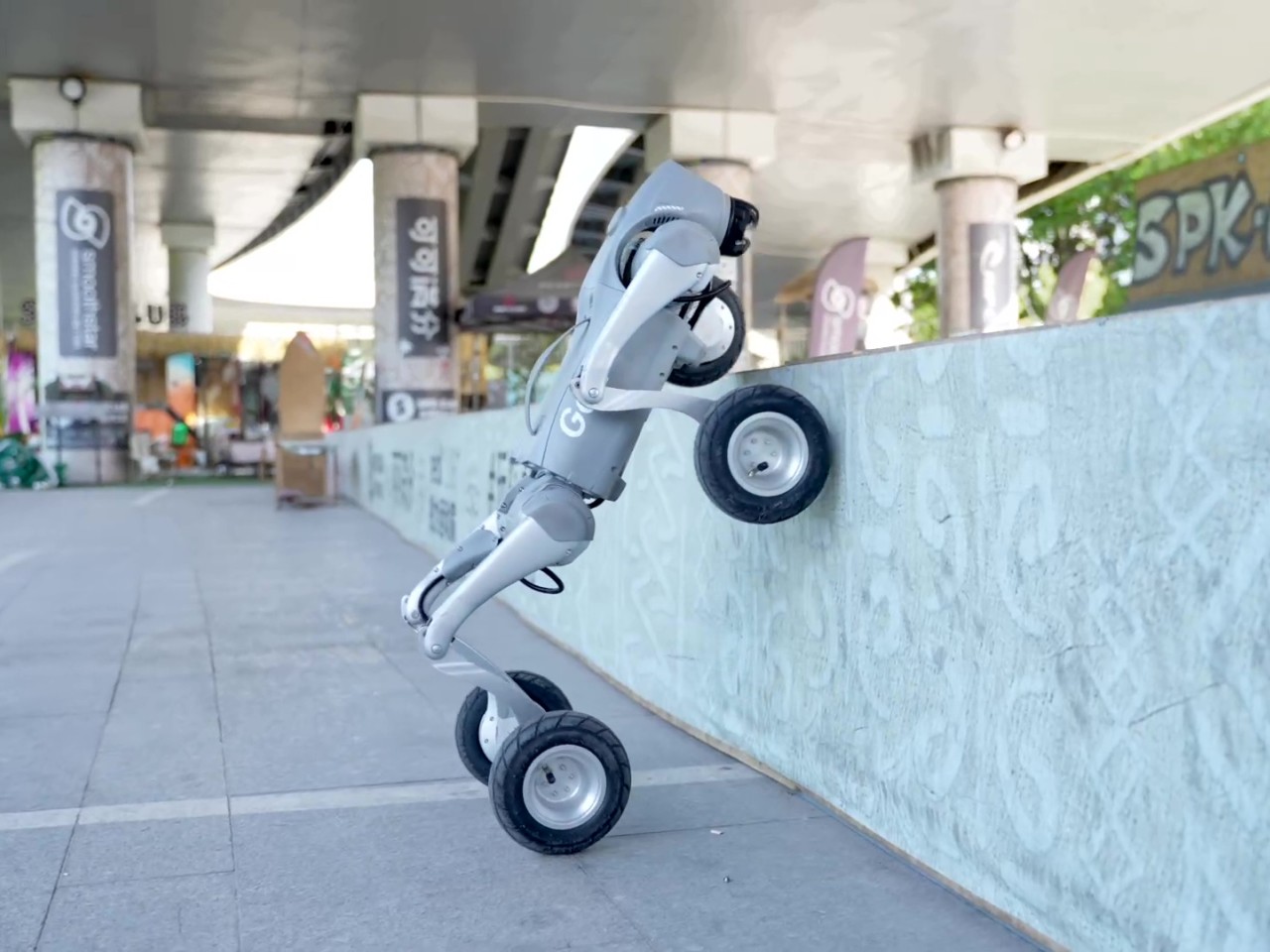
Going up any stairs is no sweat off its non-existent brow, as not only can it lift its feet like a normal (robot) dog, but the wheels actually give it a leg up, pardon the pun. The wheels not only give it a bit more grip but also help boost it up by rolling up on the vertical edge of the stairs. Like with organic dogs, going down stairs or from high places is naturally easier, just rolling off the steps or simply falling off the edge and bouncing back up.
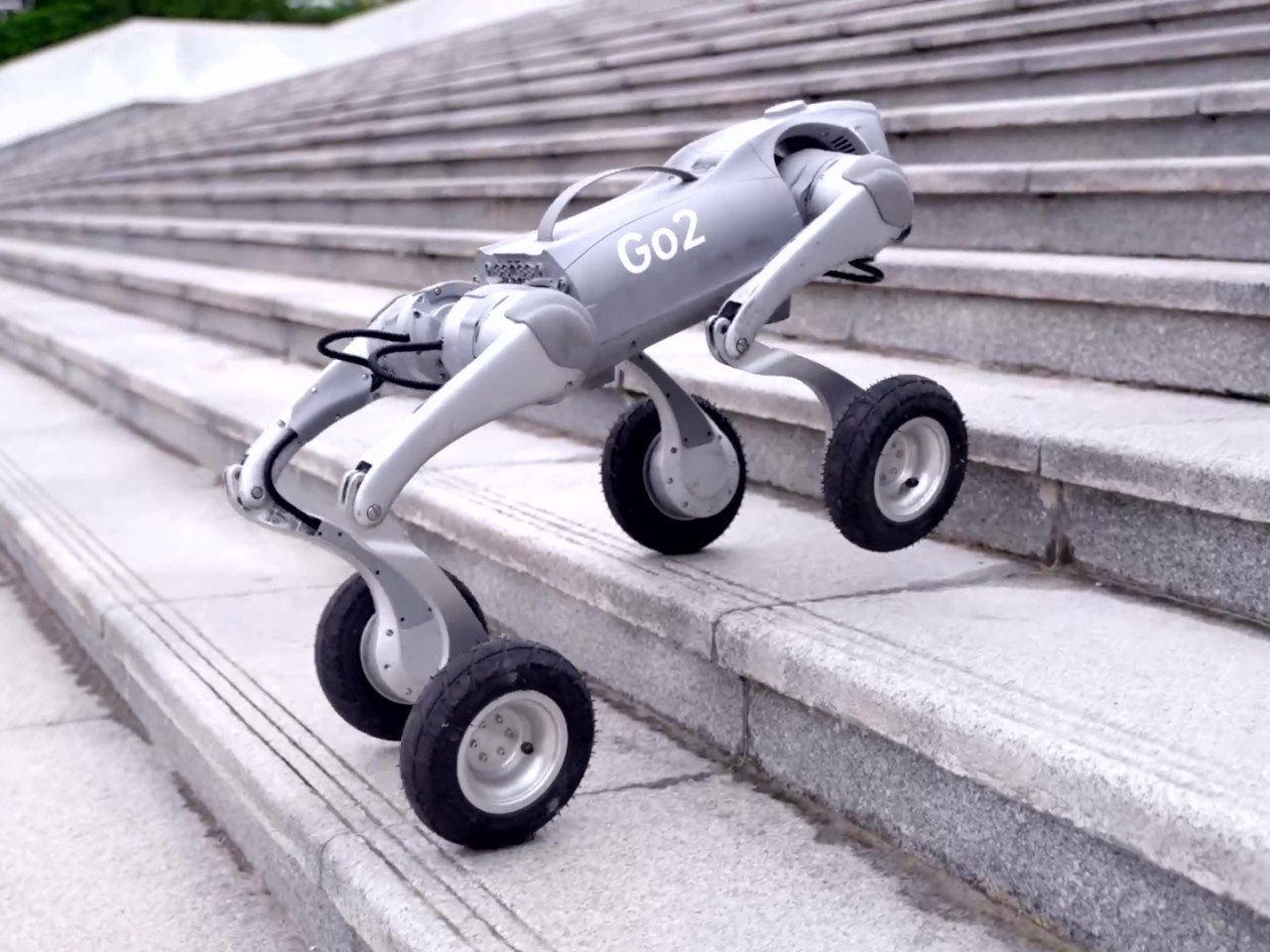
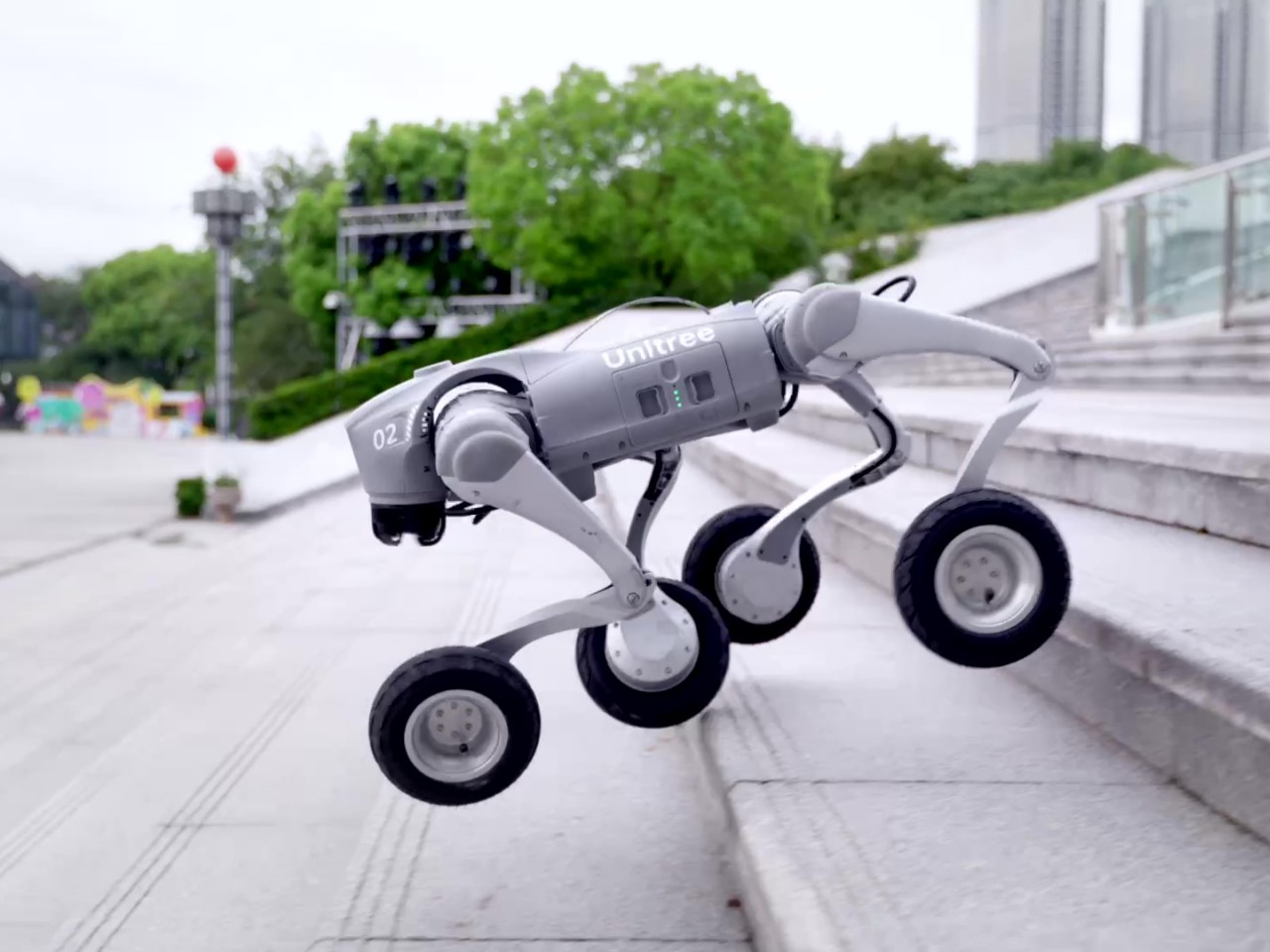
What makes the Go2-W even more special is its ability to climb over fences, almost like a real, naughty dog. It stands on its two hind feet to prop itself on top of the ledge with its front legs. It then uses those rear wheels to hoist itself up, and it’s quite cute to watch it struggle a bit, again like a real dog.
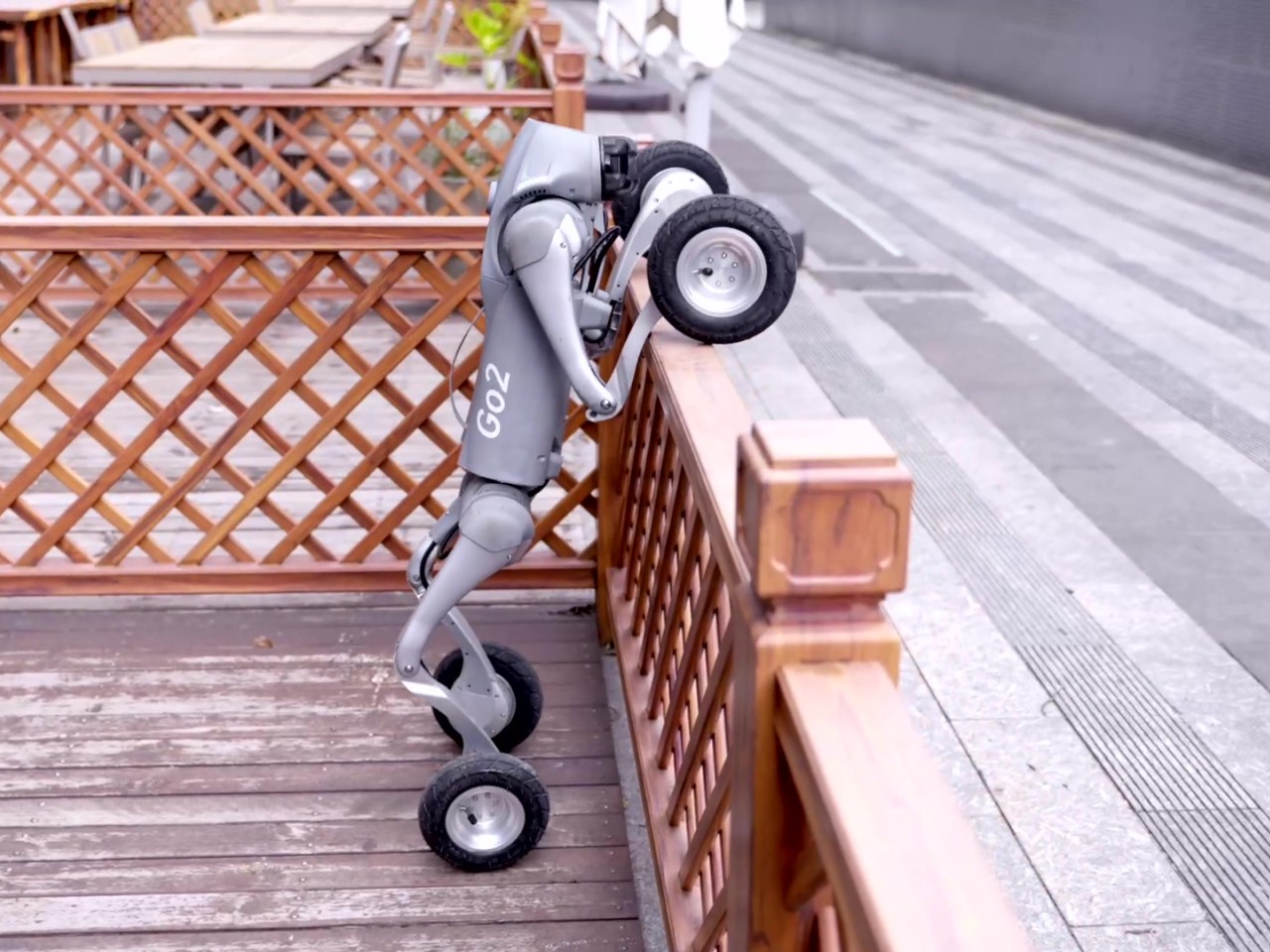
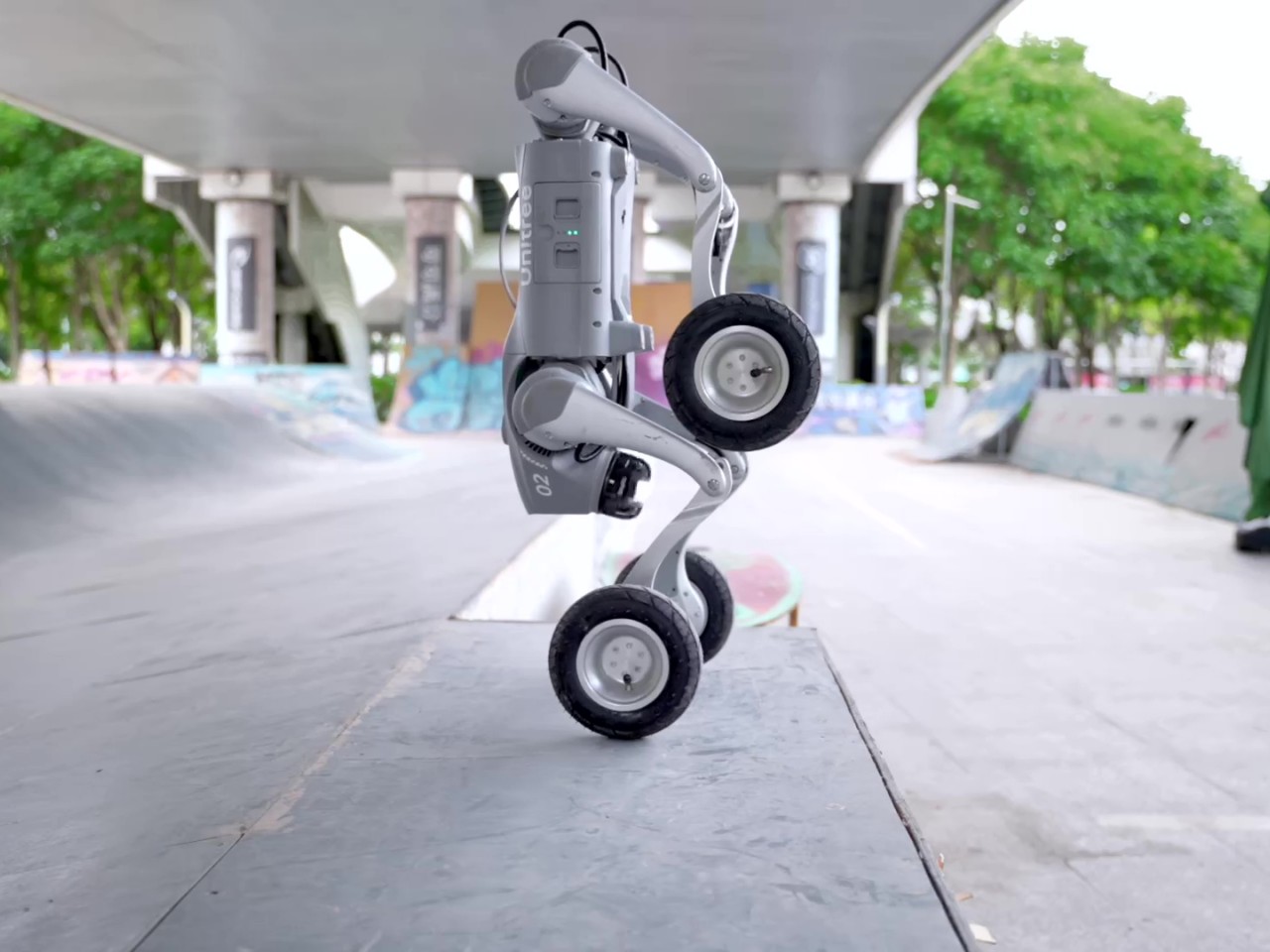
The Unitree Go2-W can do one other trick that almost no other robot dog can. It can do “handstands” and, of course, roll around upside down on its front “feet.” These are definitely impressive abilities, though some will question their practical use. The proper accessories could help the headless dog explore places that are too dangerous for humans to deliver payloads or simply analyze the area. And no one will probably mind being able to teach the dog new tricks, presuming you don’t get too uneasy with such robot dog designs.
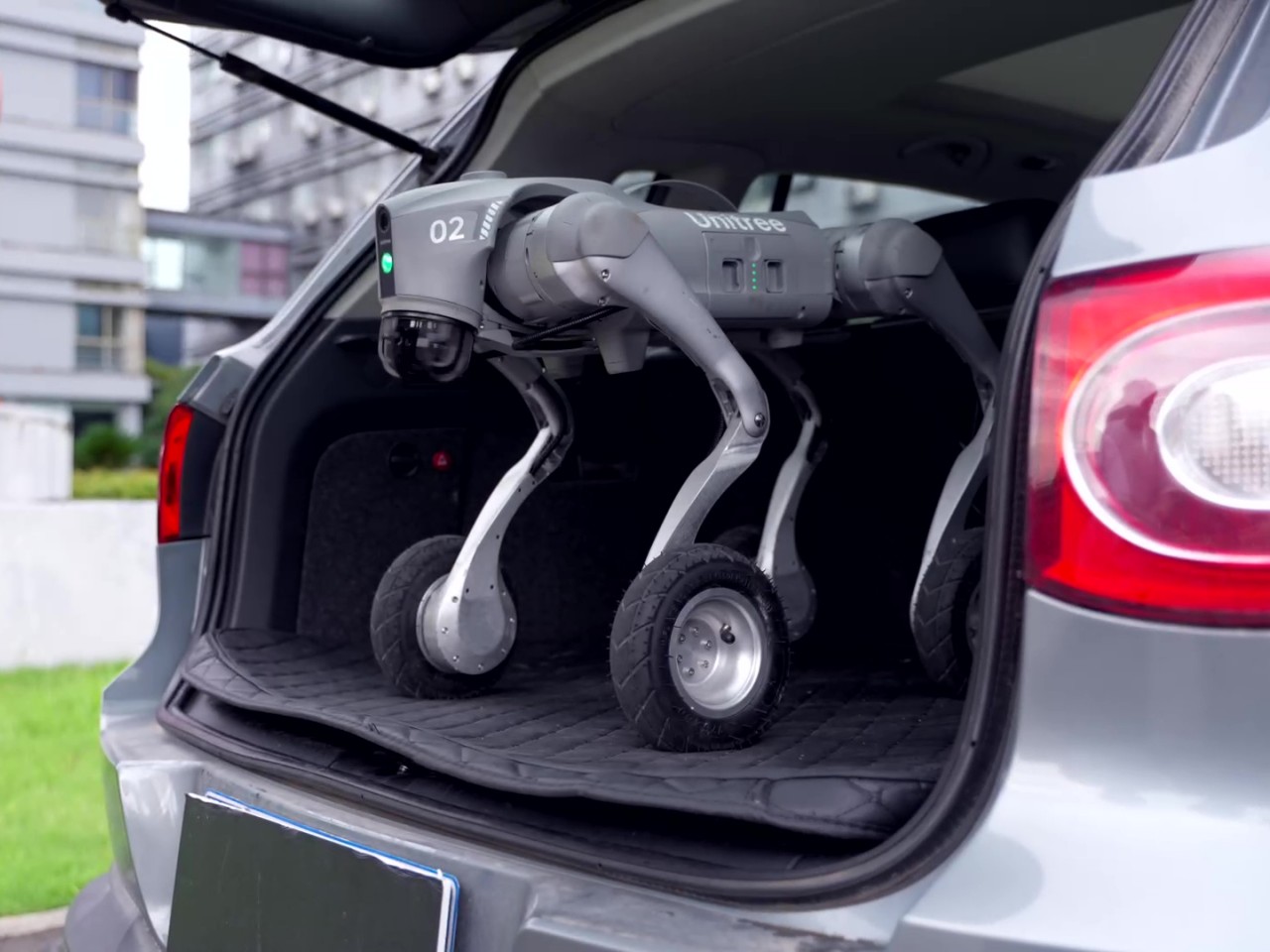
The post Robot dog with wheels for feet can climb stairs and fences, do tricks first appeared on Yanko Design.











